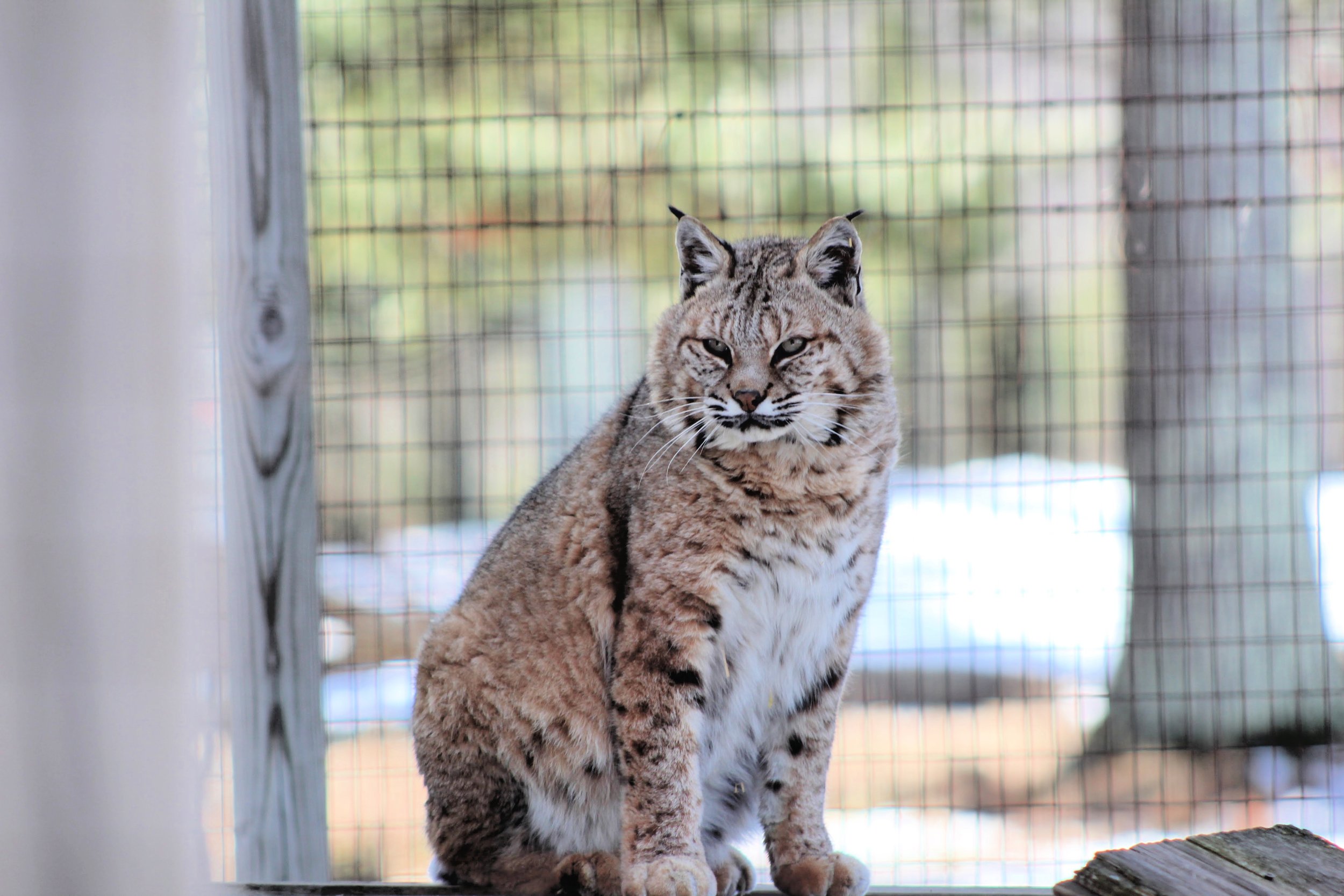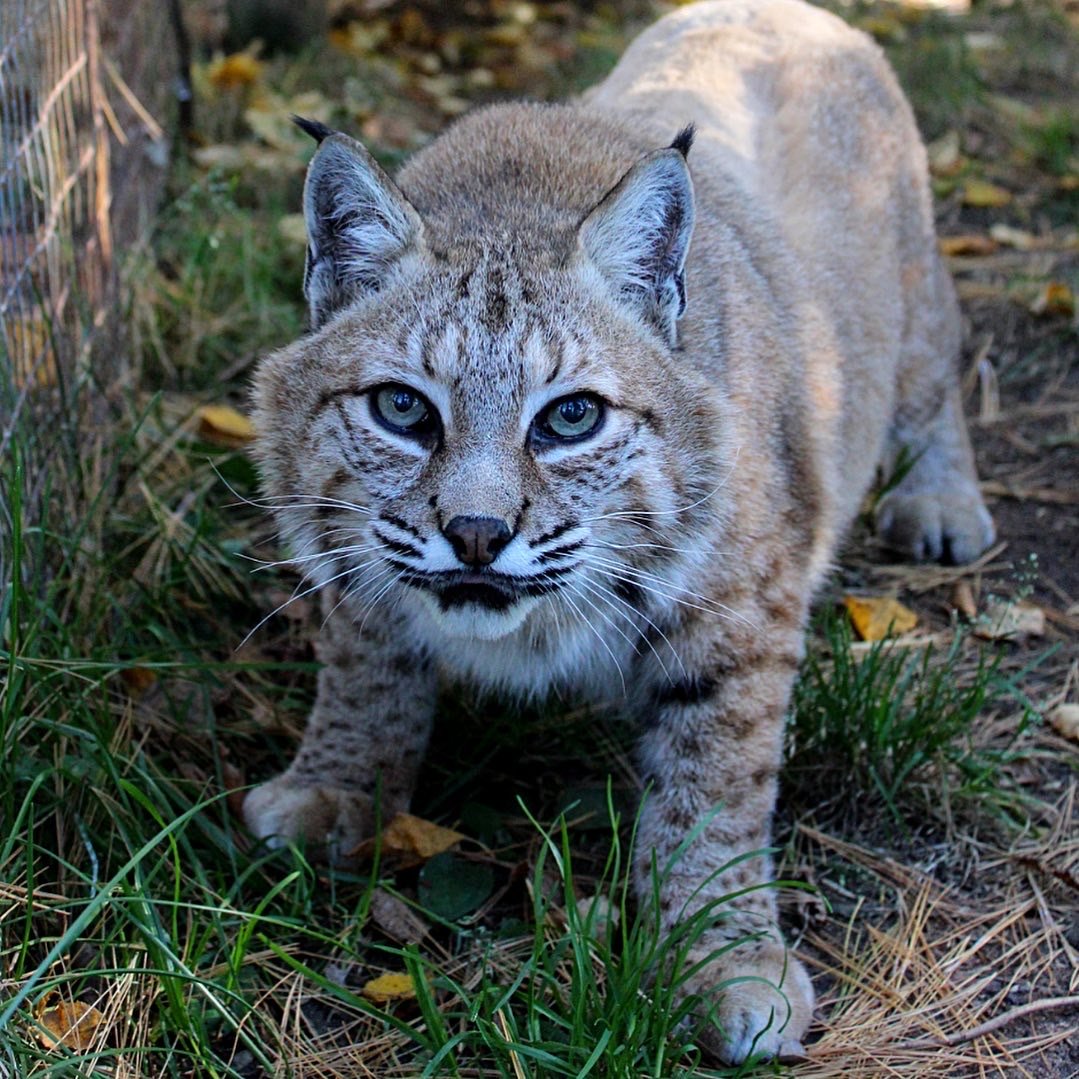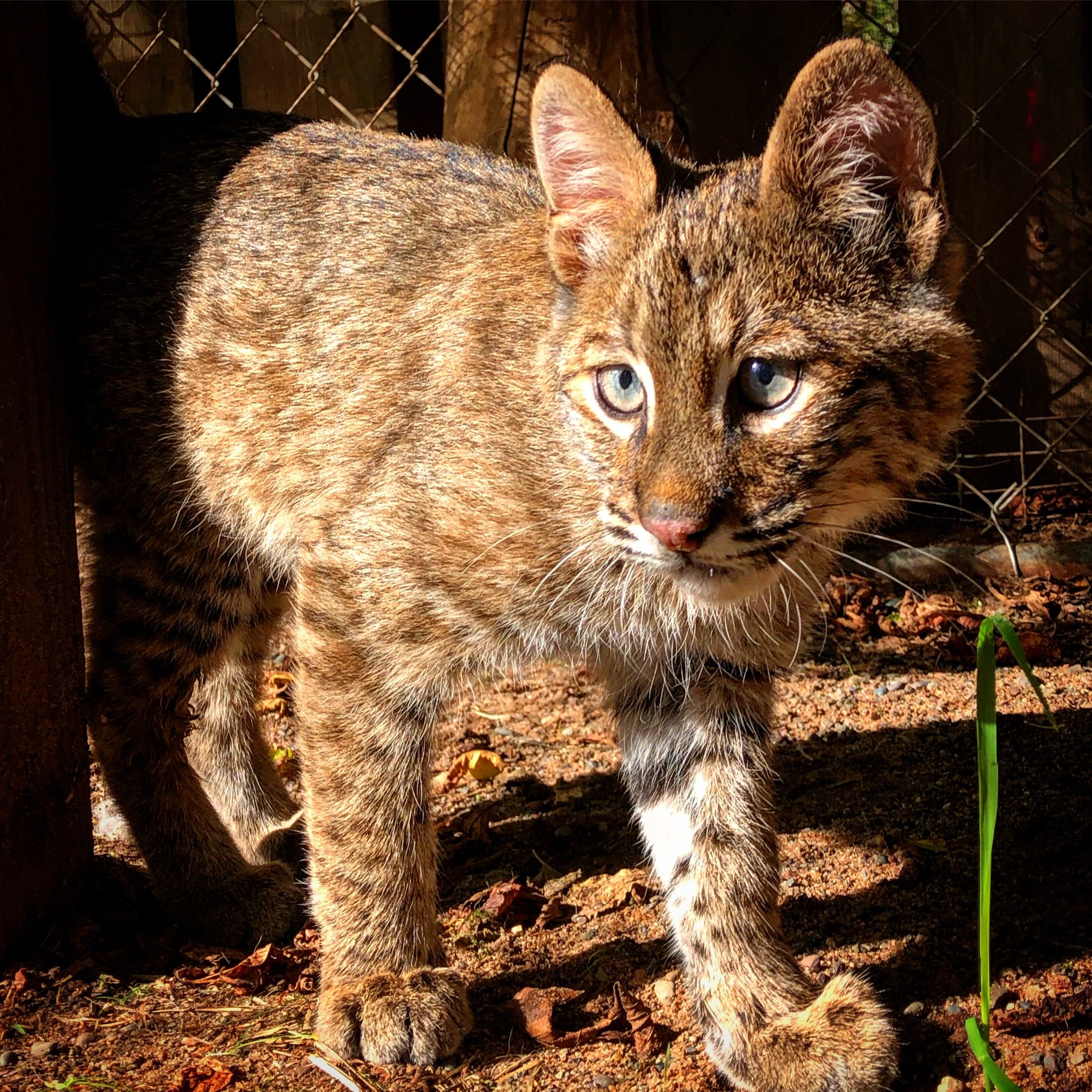
Meet Bobby
Bobcat
(Lynx rufus)
Native Habitat: Bobcats can be found throughout North America- from southern Canada all the way down to southern Mexico. With such a wide range, bobcats thrive in a wide variety of habitats including forest, shrubland, grassland, deserts, coastal marshes/swamps, and agricultural areas.
Average Length: Male: 18.7in. - 49.3in. /Female: 24in. - 43in.
Average Tail Length: Male: 4.25in. - 7.91in. /Female: 3.5 in. - 6.73.in.
Average Weight: Male: 20lbs. /Female: 13lbs. - 20lbs.
Wild Diet: Obligate carnivores. These opportunistic predators mainly consume small mammals, particularly rabbits, as well as small rodents (rats, mice, voles, chipmunks, and squirrels), deer (particularly fawns and juveniles), and other medium sized animals such as beaver, marmot, and opossum.
Lifespan: Wild- 15- 20 years, maximum
Captivity: ~23 years
Fun fact: Bobcats are commonly confused for Canada lynx. You can tell the difference between by their physical characteristics:
-Bobcats are smaller in size, on average.
-Bobcats have shorter legs, smaller feet, and shorter ear tufts.
-Bobcats have black on just the top of their tail while lynx have black that goes all the way around the tail tip.
Bobby was born on May 3, 2019, and came from Wildwood Wildlife Park in Minocqua, WI. Bobby has always been said to have a big personality in a small body since his arrival in 2019. Some of Bobby’s favorite enrichment includes bird feathers, pumpkins, Christmas trees, and papier-mache balloons with meat chunks inside.
With a number of nicknames such as wildcat, bay lynx, and lynx cat, the bobcat is our continent’s most common native cat. These medium sized cats are solitary in the wild, except during mating season or a mother with her young. Males tend to be larger than females: 10% longer and 25%- 50% heavier. Their size may be influenced by their region, topography, mating system, and food competition.






